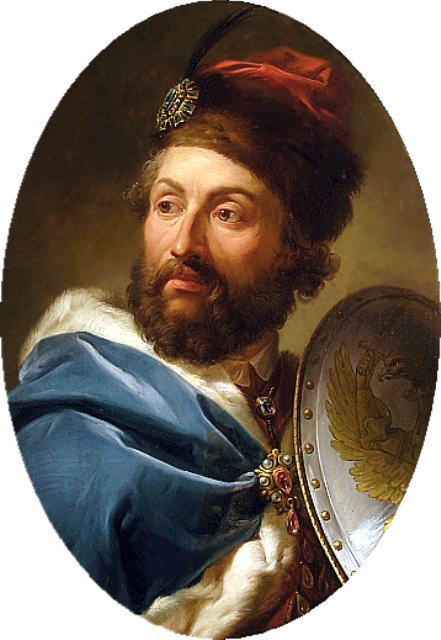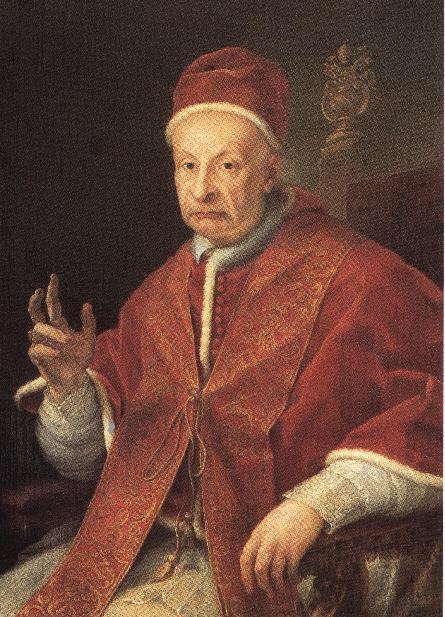Zdislaw Czapla, the Polish Caesar
Part 36: The Polish Caesars
Following the collapse of Mongol rule and the subsequent civil war which ousted the Piasts as the sovereigns of Poland, the relatively short-lived Sejmate of Poland reshaped Polish politics in the direction of more decentralized rule by the nobility, selecting from their own number candidates for the rather weak position of King of Poland. There was only one King who ruled before the invasion of Burilgi in the late 14th century, Walentyn Corwin (Valentinus Corvinus), succeeded in 1383 by Zdislaw Czapla, colloquially known as the Polish Caesar, who violently and rapidly centralized power around himself as both a military leader and a popular figure, gaining the support of the peasantry with land redistribution (which weakened his rivals in the Sejm) and the support of the soldiers of Poland by fending off incursions by the Teutons and, most notably, Khukir Burilgi Khan. He was already popular before being elected in 1383, and his power only grew as his reign entered the 15th century. Smaller skirmishes between Polish and Burilgid forces continued after Burilgi’s failed invasion in the 1390s, but within Poland, Czapla faced increasing obstacles. His agrarian reforms which favored noble houses in the fringes of the Polish state and benefited the peasantry were very unpopular with the traditional noble leadership and the notables who lived in Greater Poland, at the heart of the Polish state. By 1398, there was a plan to assassinate him, pushed forward primarily by the son of Valentinus Corvinus, Georgy Corwin. He was ultimately killed in 1399, when an assassin hired by the conspirators snuck into his chambers and stabbed him to death. The events of this assassination are dramatized in the penultimate episode of the Polish radio show, “Czapla: The Great Emperor”, a rather popular historical drama.
After his death, there was a need to select a new King to rule over Poland, and Georgy Corwin, the scion of Valentinus Corvinus and head of the conspiracy to kill Zdislaw Czapla, rose to the position. While an effective conspirator, he was an ineffective ruler, handing out concessions to his noble allies and doing little to stop the spread of banditry in the country. As Burilgi’s hold over his expansive empire waned with his age, raids by Turcs and Russians alike grew in frequency into Poland, and while garrisons on the border were increased to respond to this, most of the military activity was delegated to Corwin’s friends in the knightly houses. While both Czapla and Corwin were self serving and power hungry men, Corwin was primarily turned to giving back to the people who supported his candidacy to the Kingship, as well as those who assisted in the assassination of the former King. He had widespread support among some sections of the nobility, but little in the populace, who felt that the benefits of Czapla’s kingship were snatched from them by aristocratic machinations.
In 1409, with Burilgi’s empire collapsing to the east, a group of peasants rose up in Lesser Poland, demanding the forgiveness of debts and the redistribution of land. After a few years of rebellion, their demands shifted: Georgy Corwin must step down as King of Poland. The peasants initially faced difficulties from knightly suppression, but as their message spread to some of the other regions, namely Greater Poland, Polish Silesia, and Mazovia, the authorities had a harder and harder time keeping them down. Some historians today believe that the peasants may have enjoyed support from the Bohemian Crown, in an effort to weaken their eastern neighbor, but this is not academic consensus. Georgy Corwin’s popularity among his supporters waned as his inability to handle the peasant uprising grew more obvious, and by 1414 he was forced to step down, with the rebels eager to see their plans reach fruition. The process to select a new King began almost immediately, but the peasants did not end their rebellion, in an attempt to force the hand of the nobles in the Sejm in their favor. Due to this, for a period of three years there was no King in Poland, with the nobles unable to agree and the peasants perennially rising up in the agrarian regions. Ultimately, the younger half brother of Zdislaw Czapla, Wadem Czapla, was selected to be the next King of Poland. He took after his dead brother, attempting to centralize control under his own figure, and the greatest opportunity for this came in 1419: an attempted invasion of Poland by the Sloboda Khanate of Ali Alp Arslan, the half-Circassian that was made sovereign of Ukrajina. Margrave Josef Kapolka, appointed to a position on the border of Poland by Zdislaw Czapla, took up the charge to defend Poland from yet another eastern invasion, and Wadem reached out to him to make a closer alliance. Kapolka was entrusted with the defence of the state, and he did this well, pushing off general Ghuzz Mahmoud and keeping the eastern cities which Poland had seized in the collapse of the Burilgid Empire. He was paraded into Warszawa as a victor, but then sent back to the eastern borderlands in 1421 in order to head the Polish push into the still pagan land of Lithuania, which had been taking advantage of the disunity and chaos in eastern Europe to expand its reach and control. A few years earlier, one of the Lithuanian chiefs, by the name of Diviriks, had reached out to the Teutonic knights to potentially convert to the western rite, but he was overthrown by many of the rebellious tribal nobles under him, with his brother Kirnis installed as a new pagan sovereign over Lithuania. Poland and the Teutons joined together in a war against Lithuania in 1421, which would ultimately end in failure, and the death of Wadem Czapla in 1426. An independent and pagan Lithuania would continue to survive, for the time being at least.
Josef Kapolka, Margrave of Halich, King of Poland
A new King had to be chosen, and it would seem that yet again, a man who had defended the east from Tatar onslaught would be selected: Josef Kapolka, margrave-general of the east. While not of the same noble family as the Czapla brothers, Kapolka was, and still is, considered part of the same general alliance of notables headed by the now long dead Zdislaw Czapla. Kapolka, however, would finally pull off what Zdislaw and Wadem Czapla could not accomplish: a complete takeover in Poland. His rule began simply enough, with a general strengthening of forces in the border regions (which remained under his direct control as Margrave of Halich) and money spent on improving the defensive capabilities of the city of Warszawa itself. Behind the scenes, Josef Kapolka was making deals and alliances with many nobles and soldiers, undermining the Sejm with decrees which he hoped would land well, and inviting bands of mercenaries into the country from Hungary and the Alps. By 1430, everything was well set, and Josef Kapolka pulled off what may very well have been the dream of the Czapla brothers: a coup against the Polish Sejm. Over the course of a single week, soldiers marched into the citadels of many of the noble and knightly houses opposed to Kapolka’s rule, while the carriages of those attempting to flee the country for a hopefully friendly Bohemia or Hungary were intercepted by landsknecht brought in with promises of shares of the spoils. When many of the nobles were captured, Josef Kapolka executed half of them. While he was popular among the people for reviving the land reforms of the Czapla brothers, King Josef Kapolka gained the title of Josef the Bloody for his savage treatment of his opponents in the coup of 1430.
Josef Kapolka then led a relatively long and prosperous reign, improving relations with the Kingdom of Hungary and reaching out to the small Russian principalities to protect them from the expansionist direction of the Sloboda Khanate. In his February Edict of 1431, King Josef Kapolka, first of his name, abolished once and for all the Polish Sejm, re-establishing rule by the King of Poland and defining in specific the procedures for the succession to the Polish throne, establishing agnatic succession in Poland. He maintained his title of Margrave of Halich, and added onto it Duke of Greater Poland, founding a military order centered on Warszawa to defend the Polish capital from any threats, both internal and external. The land redistribution policies were put to an end, which would eventually prompt another peasant rebellion in 1442, violently put down by the massively strengthened army of Josef Kapolka. His reign is known as one of the bloodiest in Polish history, and while Poland grew closer to many of its neighbors, internally it was marred by the deaths of many nobles and the suppression of the peasantry. Many Polish soldiers were committed to the defense of Hungarian interests in the Balkans, while smaller contingents were sent to Ukrajinan cities in the hinterlands between Poland and the Sloboda Khanate, but by far the majority of military action in the period of 1430 to 1452, the death of King Josef Kapolka, was within Polish territory.
The Baptism of Alexander, depicting the conversion of Lithuania to Eastern Orthodox Christianity
When Josef the Bloody died in 1452, a very old man that had led a long and interesting life, he left his second eldest son as his only surviving heir. His eldest died before him, succumbing to pestilence in his bed one day, but his second eldest, a young man by the name of Dobrogost Kapolka, rose to the occasion to be the King of Poland, at the head of the state established by Walentyn Corwin and strengthened by the Czapla brothers and his own father. His reign, however, ended in failure, of a sort. Algirdas, the pagan grand chief of Lithuania, converted to the eastern rite, being baptized as Alexander I, Grand Duke of Lithuania, and marrying a daughter of the King of Novgorod. The hopes and aspirations of a constantly expansionist Catholic Church were dashed by the last pagan holdout in Europe converting once and for all to a faith other than their own, and western Christendom turned inward. The effects of the Church’s failings in the 15th century, from the disunity of the Holy Roman Empire and the corruption which was endemic to the papacy to the failure to successfully convert the Mongols and Lithuanians would not be obvious at first, but they were yet still simmering. King Dobrogost was aghast at the news, and turned toward another front: Hungary and the Balkans.
TIMELINE OF POLISH KINGS
Casimir III Piast (1330-1347)
Polish Civil War and Interregnum (1339-1359)
Polish Sejmate (1359-1431)
Valentinus Corvinus (1359-1383)
Zdislaw Czapla (1383-1399)
Georgy Corwin (1399-1414)
Peasant Uprising and Interregnum (1409-1417)
Wadem Czapla (1417-1426)
Josef Kapolka (1426-1452) (February Edict 1431)
Dobrogost Kapolka (crowned 1452)




